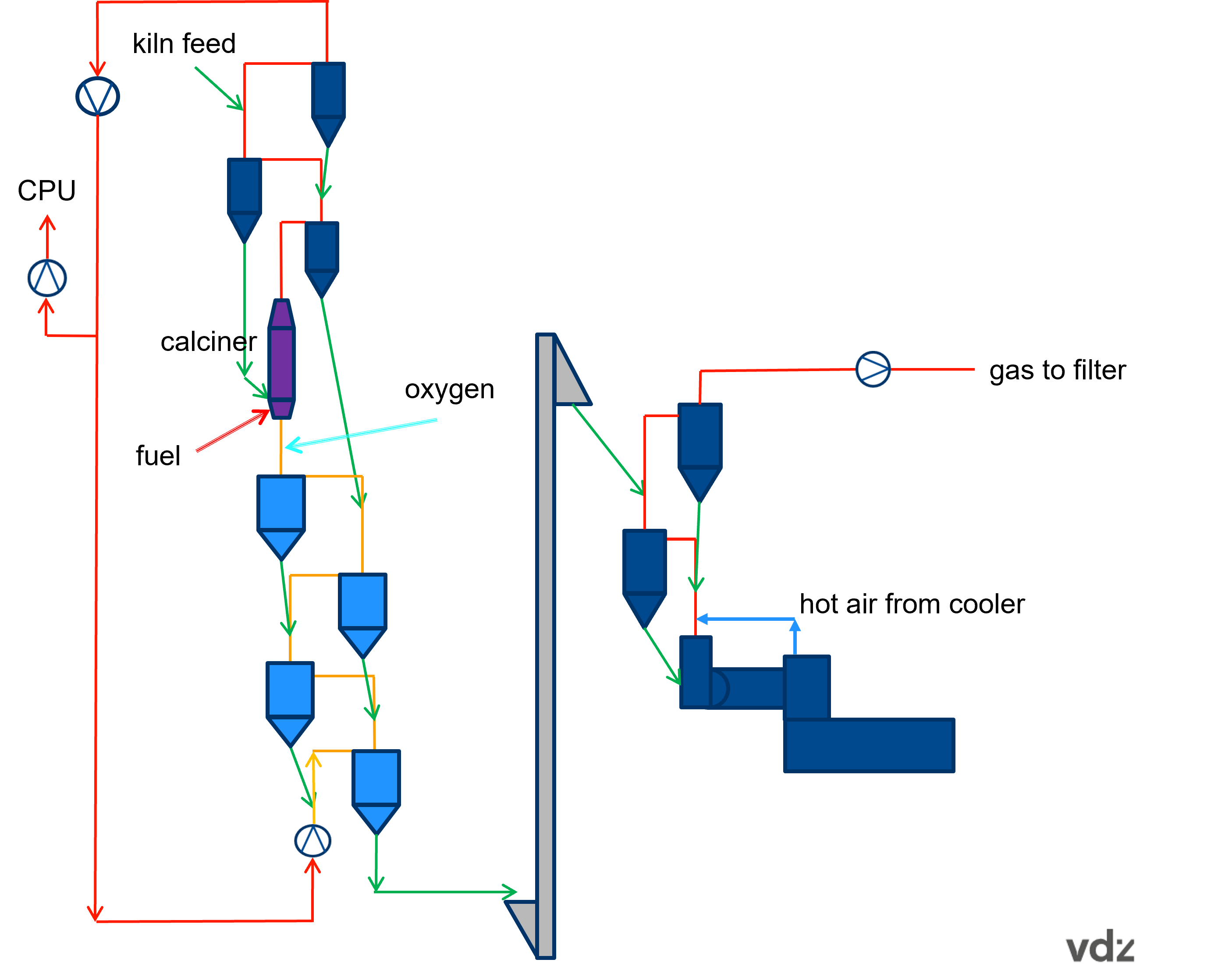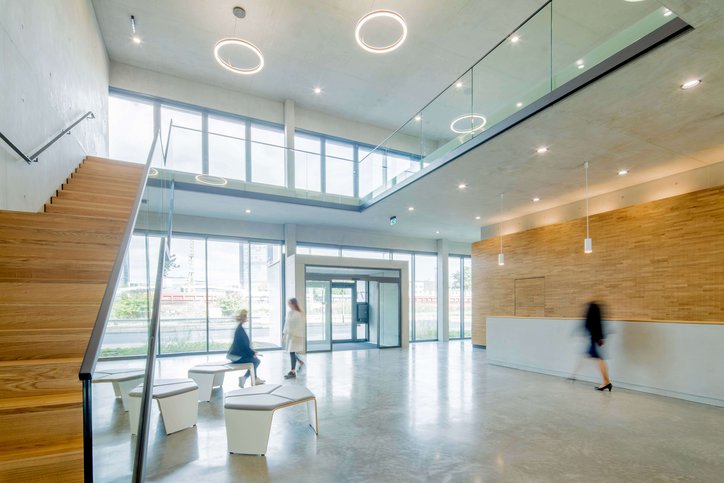Partial oxyfuel cycle
The process can be divided into three areas: Preheating, calcination and energy recovery and cooling of the kiln feed (calcined raw meal). Raw meal is preheated using a 2-5 stage cyclone heat exchanger and fed to the calciner. Calcination of the raw meal takes place in the calciner at temperatures of around 950 °C with the addition of pure oxygen and/or via electrical energy and/or biomass. The calcined raw meal is then fed to the uppermost cooling cyclone of a downstream cyclone cooler. Here, the kiln feed cools down after passing through several cyclone stages (cyclone cooler). After the lowest cooling cyclone, the kiln feed leaves the precalcining area and is fed via a bucket elevator to a separate rotary kiln plant for cement clinker production (see Fig. 1).
The "cool" exhaust gases from the cyclone preheater are in turn extracted by an exhaust gas fan and supplied to the cooler fan in a circulation process. The CO₂ rich process gas is now supplied to the lowest cooling cyclone stage. The gas flows through the individual cyclone stages of the cooler and heats up in countercurrent to the cooling kiln feed. Before or in the top (hottest) cyclone stage of the cooler, further oxygen is added to the gas, which is required for the reaction of the fuel in the calciner.
In the reactor (calciner), the preheated raw meal, the fuel, heated CO₂ from the exhaust gas and the oxygen required for combustion meet and react with each other. Within a very short time, e.g. a few seconds, the limestone (CaCO₃) in the raw meal is decomposed into gaseous carbon dioxide (CO₂) and calcium oxide (CaO). The now CO₂-rich exhaust gas leaves the calciner and passes through the individual cyclone stages of the preheater to the exhaust gas fan. In this way, the raw meal is heated by the CO₂-rich exhaust gas. The exaust gas is routed via gas duct to the cooling fan and fed back into the process.
Once the exhaust gas flow has been enriched with CO₂, another exhaust gas fan takes this gas flow to the CPU (Compression and Purification Unit - this unit is needed for recovering the purified CO₂).

